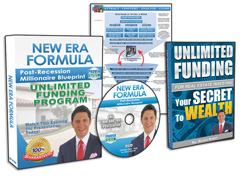
 Investing in distressed real estate is different than investing in the regular residential real estate. As “distressed”, the property may be in pre-foreclosure, foreclosure, short sale, the owner may have a huge lump sum that’s due, perhaps there’s a collateral issue with another property or some other situation that causes the property to be in a “distressed” state. Understanding the differences will help you out as you continue your real estate investment journey.
Investing in distressed real estate is different than investing in the regular residential real estate. As “distressed”, the property may be in pre-foreclosure, foreclosure, short sale, the owner may have a huge lump sum that’s due, perhaps there’s a collateral issue with another property or some other situation that causes the property to be in a “distressed” state. Understanding the differences will help you out as you continue your real estate investment journey.
The main difference is that the seller’s home is either about to go into foreclosure or already is in foreclosure. Now, if you’re buying homes using my Unlimited Funding Strategy, then you’ll want the house to be pre-foreclosure. Regardless, here are some tips to consider if you’re in the business of investing in distressed real estate.
1. Buy from sellers that are motivated to sell
Look for those sellers that are highly motivated to sell. They want and need to sell their home quickly, perhaps facing short-sale, pre-foreclosure, or are looking to sell due to something like divorce, relocation, disability, etc. The key is to gauge how motivated they are. Are they willing to sell at a discounted price? Do they need a quick sale?
2. Market to this particular niche
If you only check the MLS looking for motivated sellers, you’ll have plenty of competition. Therefore, to get ahead of that competition, spend time fine-tuning your marketing strategy to your particular niche. Some of the best ways to reach motivated sellers with distressed real estate are to post classified ads online and in newspapers, direct mailings, and bandit signs in neighborhoods if they are allowed by your local ordinances.
3. Master the After Repair Value (ARV)
You’re going to want to get good at coming up with your Maximum Offer Price (MOP), as you don’t want to end up paying anything over that price. To get the ARV, take the number you get after you’ve determined how much repairs will cost and multiply it by 65 percent. Then, subtract the Repair Estimate (RE), and the result is the Maximum Offer Price (MOP).
If you happen to be wholesaling, the ARV is a figure you’ll want to become quite familiar with, as those investors looking at buying that property will be aware of the ARV formula.
4. Calculate estimated profit
You’ll want to know how to calculate your estimated profit on the home before you decide to purchase it or not. A great way to find this number is to add the following numbers:
- Commission
- Purchase Price
- Repair Estimate (RE)
- Holding Costs
- Repairs
- Closing Costs
Now take that figure and subtract it from the Sales Price and your result is your Potential Profit. Now, remember to include property taxes, insurance, maintenance, and interest in your figures. Also, be conservative in your estimates, as you’d rather estimate high and be on the safe side than low and lose out on money.
5. Know your exit strategy
Before you decide to purchase a distressed home, know what your exit strategy will be. Do you want to hold onto the property long-term? Are you buying it ‘Subject To’ and selling it with a lease option? Are you going to flip it?
Knowing your exit strategy is something to consider before buying an investment. You’ll want to take into consideration your particular situation, whether you’re using cash or not, your expectations, and so on. If you’re not sure, keep doing your research and learning about the different exit strategies before making your final decision.
After you decide, start doing your research and begin marketing to your niche. As you get calls, determine the seller’s motivation level to sell and work from there. The reality is that there are always distressed properties out there, so keep honing your marketing strategy to keep them coming to you.
Request FREE Funding Kit and Discover How To Legally Bypass Banks And Gain Direct Access To "No-Credit-Required" Funding You Can Use To Achieve Your Financial Freedom... Start Now!












